You just finished running Cat6 cable all over your home or office. You were expecting blazing speed, but the network feels like it's dragging its feet. What gives? If you're frustrated and thinking, "Why is my Ethernet so slow?"
Many people hit this same wall after upgrading. The truth is that installing new Cat 6 cable doesn’t always fix the speed issue. There’s more to the story. So let’s break it down. We’ll cover what Cat6 cable speed should look like, what messes it up, and how to get things working the way they should.
Why Is the Network Running Slow After Cat6 Installation?
You picked Cat6 because it's supposed to be fast. And it is, but only on paper. Cat6 Ethernet speed supports up to 1 Gbps at 100 meters and 10 Gbps at 55 meters. So, why is my Ethernet network connection slow, even with Cat6?
Here’s the deal: just swapping out the cable doesn’t fix every weak link. If your router, switch, wall jacks, or devices are old, they could bottleneck your speed. Even brand-new cables can have problems if installed poorly. Many people ask, "Does an Ethernet cable affect internet speed?" It sure can, but only if the cable isn’t set up right.
Factors that Affect Cable Performance
Even the best cables are picky. There are some factors that can impact the cable performance. Hence, it could be the reason why your Cat6 cable isn’t working at optimal speeds. Here are some things that trip up Cat6 speeds:
- Loose connections or bent pins can cause major slowdowns.
- Too much length can cause the Cat6 cable's speed to drop over long runs.
- Electrical interference from nearby power cables messes with signal strength.
- Wrong cable type, as using Cat5e or mislabeled wire limits speed.
- Bad terminations since if ends aren’t punched or crimped properly, the cable can’t do its job.
Any of these can make your network crawl, even with Cat 6 Ethernet speeds rated for way more.
Things to Keep in Mind When Deploying Ethernet Cable
There are a few important factors for you to know when using Ethernet cable for your home or business networking needs. It will ensure you don’t face issues down the road.
1. Difference in Quality
Just because it says Cat6 doesn’t mean it’s real or certified. Some off-brand stuff might look okay, but deep down, it’s junk. If you bought a cheap roll online, check the Cat6 cable specifications. Is it copper or CCA (copper-clad aluminum)? CCA can’t handle the same speed of Cat6 Ethernet cable as real copper wire.
Also, double-check that you didn’t get regular Cat6 when you needed Cat6a. The “a” version handles 10 Gbps for longer distances. If your run is long, that might explain your issue.
2. Messy Install Can Lead to Inconsistent Speed
Did you staple the cable to the wall? Wrap it tightly around power cords? Bend it hard around corners? That could be it. Network wire getting less speed can often be blamed on poor routing. Sharp bends ruin signal flow. Keep those turns loose and wide.
Also, make sure your connectors are punched correctly, since misaligned pins can lead to mystery lag. It’s not uncommon to find that cat 6 wiring causes upload speed issues due to a crimping error.
3. Devices Matter (A Lot)
Let’s say your laptop’s Ethernet card maxes out at 100 Mbps. Guess what? Your Cat 6 cat6 cable won’t go faster than that. Or your router only supports 10/100 Mbps ports, not gigabit. That would explain why direct connections with Cat 6 cable give a very slow speed.
4. Distance and Signal Loss
Another common question: Do long Ethernet cables affect speed? The answer is it does. Once you go past 100 meters (about 328 feet), you’re asking for trouble. Even at 150 feet, signal loss kicks in. People often wonder how much speed is lost at 150ft of Cat 6.
Well, you could lose half your throughput or more depending on the environment. This is where you should consider using Cat6a or installing switches in between to boost the signal.
5. Your Network Needs Breathing Room
If there is lot of traffic with multiple users streaming, downloading, gaming, or working, then your bandwidth gets chopped into pieces. A Cat6 LAN cable speed of 1 Gbps doesn’t mean every device gets 1 Gbps all the time. The router spreads it out.
So if you’re saying, “Why is my Ethernet speed so slow?”—check who else is on the network. And don’t forget, Ethernet switches can slow down speed if they’re outdated or overloaded.
Conclusion
If your Cat6 install is dragging, it’s probably not just the cable’s fault. Look at your gear, your setup, your habits. Slow Ethernet is fixable, but it needs a full check, not just a shiny new wire. Ready to upgrade your setup the right way? Visit TS Cables for top-quality Ethernet solutions and expert advice. Make your network fly and don’t let poor planning slow it down.
FAQs
Why is my Ethernet so slow all of a sudden?
Changes in connected devices, router issues, or interference can suddenly tank network cable speeds. Run speed tests and check hardware.
Does an Ethernet cable affect internet speed?
Yes. Low-grade or poorly-installed cables limit Cat 6 cable speed. Even with great service, bad cabling means bad speeds.
Why is my Ethernet network connection slow, even with Cat6?
Check all the pieces. Outdated switches, poor terminations, and long cable runs all hurt Cat6 Ethernet speed.
Can Cat6 wiring cause upload speed issues?
Yes. Incorrectly punched ends or EMI (interference) can make Cat 6 wiring cause upload speed problems, especially in noisy areas.
Around what year did the upgrade to Cat6 cables happen?
Cat6 started becoming common around 2002–2005, though many systems still use Cat5e. Upgrading doesn’t always mean faster if the rest isn’t upgraded too.






